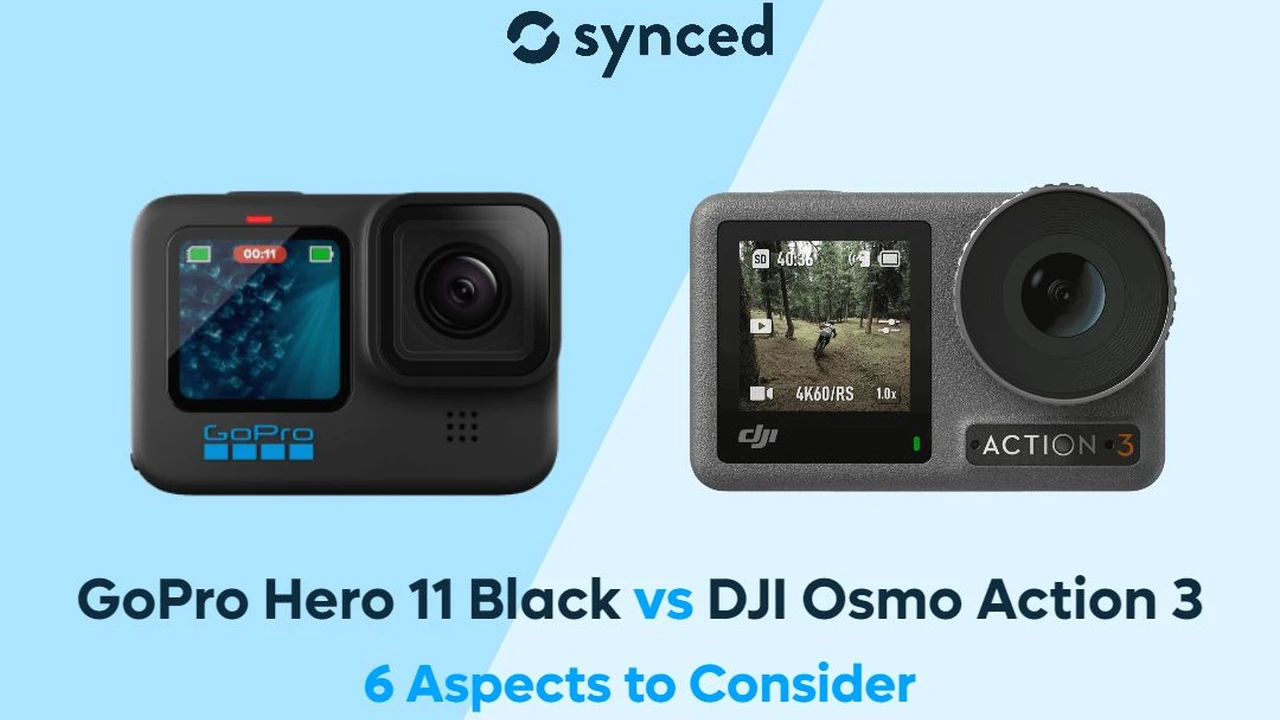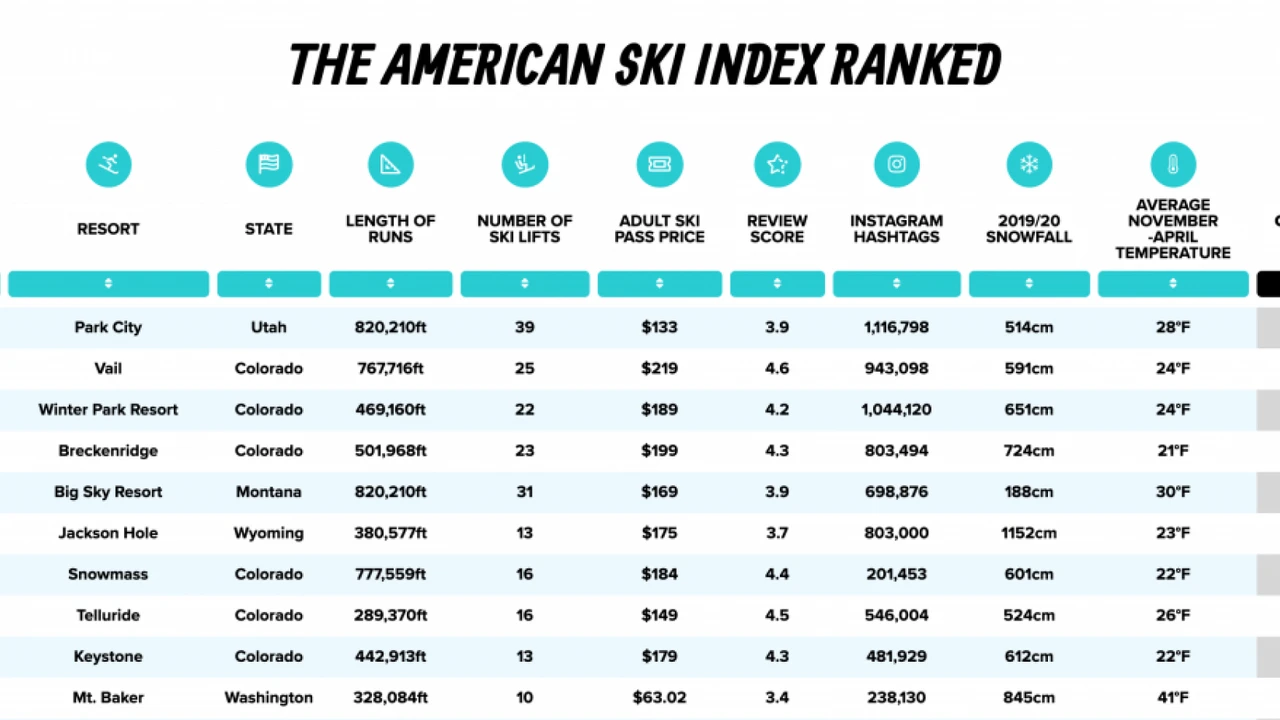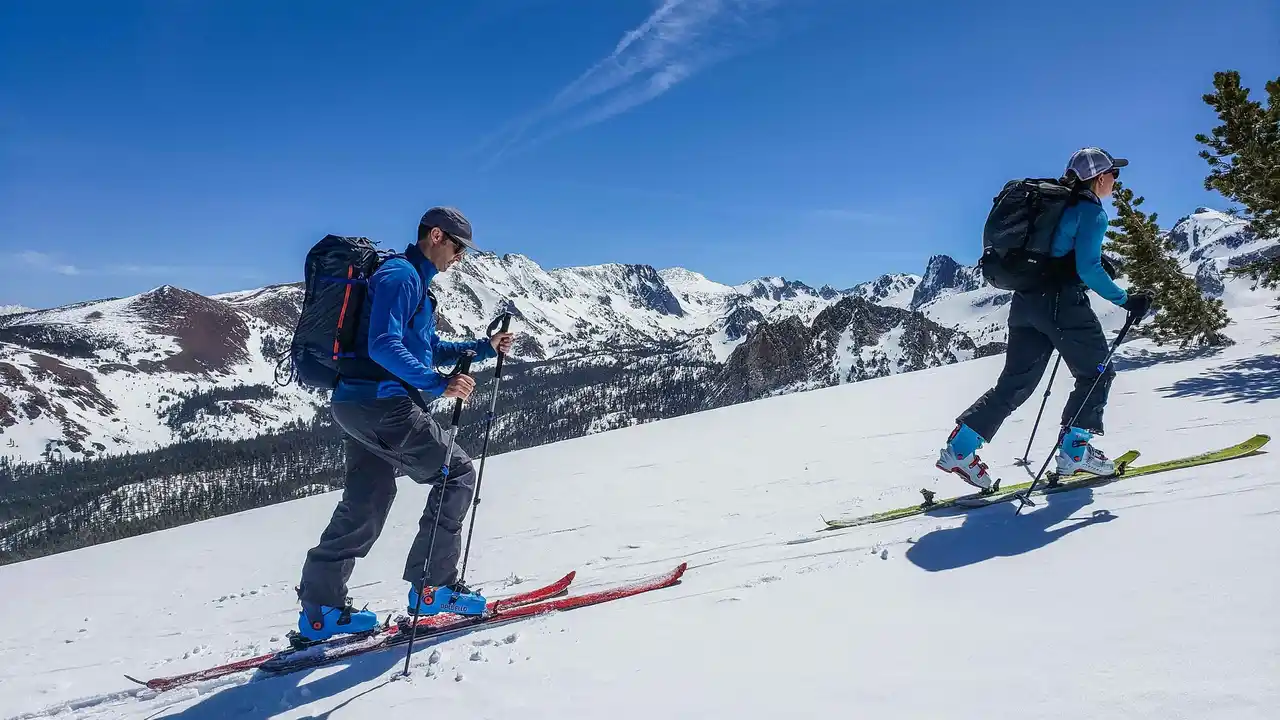Comparing Action Cameras GoPro vs DJI Osmo
Capture your adventures with the best action cameras. A comparison of GoPro vs DJI Osmo for video quality and durability.

Comparing Action Cameras GoPro vs DJI Osmo
GoPro vs DJI Osmo Action Camera Showdown
When it comes to capturing your most thrilling adventure moments, action cameras are indispensable. For years, GoPro has been the undisputed king of this domain, synonymous with extreme sports videography. However, in recent years, DJI, a company renowned for its drones and gimbals, has made significant inroads with its Osmo Action series. This head-to-head comparison will delve deep into the features, performance, and user experience of both GoPro and DJI Osmo action cameras, helping you decide which one is the ultimate companion for your next adventure.
GoPro Hero Series Key Features and Models
GoPro has consistently pushed the boundaries of action camera technology. Their Hero series is known for its robust build, excellent image stabilization, and a vast ecosystem of accessories. Let's look at some of their popular recent models and their standout features.
GoPro Hero 12 Black: The Latest Flagship
The GoPro Hero 12 Black is GoPro's current flagship, boasting impressive specifications. It features a new 1/1.9-inch sensor that allows for 8:7 aspect ratio video, perfect for cropping to different social media formats. It can record 5.3K video at 60fps, 4K at 120fps, and 2.7K at 240fps for incredible slow-motion. Its HyperSmooth 6.0 stabilization is arguably the best in the business, providing buttery-smooth footage even in the most chaotic environments. The Hero 12 Black also introduces GP-Log video for professional color grading and supports Bluetooth audio connectivity for external microphones. It's waterproof down to 33 feet (10 meters) without a housing.
GoPro Hero 11 Black: A Powerful Predecessor
The Hero 11 Black, while a generation older, still offers incredible value. It shares the same 1/1.9-inch sensor as the Hero 12, offering similar video resolutions and frame rates, including 5.3K60 and 4K120. Its HyperSmooth 5.0 stabilization is still top-tier. The Hero 11 Black also introduced 10-bit color, which provides over a billion shades of color for more vibrant and accurate footage. It's also waterproof to 33 feet (10 meters).
GoPro Hero 10 Black: A Budget-Friendly Option
For those on a tighter budget, the Hero 10 Black remains a very capable camera. It features the GP2 processor, which significantly improved performance over its predecessors. It can record 5.3K video at 60fps and 4K at 120fps. HyperSmooth 4.0 provides excellent stabilization. While it lacks the 10-bit color and 8:7 aspect ratio of the newer models, it's still a fantastic choice for most users.
DJI Osmo Action Series Key Features and Models
DJI entered the action camera market with a bang, offering compelling alternatives to GoPro. Their cameras are known for their innovative dual-screen design and robust build quality.
DJI Osmo Action 4: The Latest Contender
The DJI Osmo Action 4 is DJI's latest offering, featuring a larger 1/1.3-inch sensor, which excels in low-light conditions. It can record 4K video at up to 120fps and 2.7K at 120fps. Its RockSteady 3.0 stabilization is highly effective, providing smooth footage. A standout feature is its native waterproofing down to 59 feet (18 meters) without a case, making it ideal for divers and water sports enthusiasts. The dual full-color touchscreens (front and rear) are incredibly convenient for vlogging and framing shots.
DJI Osmo Action 3: A Solid Performer
The Osmo Action 3, released before the Action 4, is still a strong contender. It features a 1/1.7-inch sensor and can record 4K video at up to 120fps. Its RockSteady 3.0 stabilization is also excellent. Like the Action 4, it boasts native waterproofing to 52 feet (16 meters) and the convenient dual-screen design. It's a great option for those looking for a high-performing action camera at a slightly lower price point.
Video Quality and Image Stabilization Comparison
This is where the rubber meets the road for action cameras. Both brands offer excellent video quality, but there are subtle differences.
Resolution and Frame Rates for Adventure Footage
GoPro generally offers higher maximum resolutions and frame rates, especially with its 5.3K capabilities. This provides more flexibility for cropping and reframing in post-production. DJI's 4K at 120fps is still excellent for most users and offers fantastic slow-motion. The larger sensor in the Osmo Action 4 gives it an edge in low-light performance, producing cleaner, less noisy footage in challenging lighting conditions.
Electronic Image Stabilization EIS Technology
GoPro's HyperSmooth stabilization has long been the industry benchmark. HyperSmooth 6.0 on the Hero 12 Black is incredibly effective, making even the shakiest footage look professional. DJI's RockSteady stabilization is also highly impressive and has closed the gap significantly. For most casual users, both systems will provide excellent results. However, for extreme sports with intense vibrations and movements, GoPro's HyperSmooth might still have a slight edge in maintaining absolute smoothness.
Color Science and Dynamic Range for Outdoor Scenes
GoPro's color science tends to be more vibrant and punchy straight out of the camera, which is great for quick sharing. The introduction of 10-bit color and GP-Log on the Hero 11 and 12 Black gives professional users more control over color grading. DJI's color science is often described as more natural and true-to-life. The larger sensor in the Osmo Action 4 contributes to better dynamic range, especially in high-contrast scenes, preserving details in both highlights and shadows.
Durability and Design for Extreme Environments
Action cameras are built to withstand abuse, and both GoPro and DJI excel in this area.
Waterproofing and Submersion Capabilities
GoPro cameras are waterproof to 33 feet (10 meters) without a housing. For deeper dives, you'll need a separate dive housing. DJI Osmo Action cameras, particularly the Action 4, offer superior native waterproofing down to 59 feet (18 meters) without any additional housing. This is a significant advantage for divers, snorkelers, and anyone frequently engaging in water sports.
Build Quality and Impact Resistance
Both brands build their cameras with rugged materials designed to withstand drops and impacts. They feel solid in hand and are clearly designed for tough environments. While neither is indestructible, they are far more durable than typical consumer cameras.
Screen Design and User Interface for Quick Access
This is a major differentiator. DJI Osmo Action cameras feature dual full-color touchscreens – one on the front and one on the back. This is incredibly convenient for vlogging, selfies, and framing shots when the camera is facing you. GoPro cameras typically have a small front display for status information and a larger rear touchscreen. While the Hero 12 Black's front screen is improved, it's not a full-color display like DJI's. For ease of use and framing, DJI's dual-screen setup is a clear winner.
Battery Life and Charging Solutions for Extended Use
Battery life is crucial for action cameras, as you don't want to miss that epic shot because of a dead battery.
Battery Capacity and Real World Performance
GoPro's Enduro battery, included with the Hero 11 and 12 Black, significantly improved cold-weather performance and overall battery life. In real-world testing, both GoPro and DJI offer comparable battery life, typically ranging from 60 to 90 minutes of continuous 4K recording, depending on settings and temperature. It's always recommended to carry spare batteries for extended shoots.
Fast Charging and Power Management
Both cameras support fast charging, allowing you to quickly top up your batteries. GoPro offers a dual battery charger, and DJI has a multi-battery charging case that can also act as a power bank. Efficient power management is key, and both brands have made strides in optimizing power consumption.
Audio Quality and External Microphone Options
Good audio can make or break your adventure videos.
Built-in Microphones and Wind Noise Reduction
Both GoPro and DJI have improved their built-in microphones, offering decent audio quality for general use. They also feature wind noise reduction algorithms, which are essential for outdoor recording. However, for professional-grade audio, external microphones are always recommended.
Bluetooth Audio and Wired Microphone Adapters
The GoPro Hero 12 Black supports Bluetooth audio, allowing you to connect wireless microphones like the GoPro Media Mod or third-party Bluetooth mics directly. This is a huge convenience. For wired microphones, both brands offer media mods or adapters that provide a 3.5mm audio jack. The GoPro Media Mod is a popular accessory that adds a directional mic, 3.5mm mic port, HDMI out, and two cold-shoe mounts.
Connectivity and Ecosystem for Seamless Workflow
How easily you can transfer and edit your footage is a big part of the user experience.
Wireless Transfer and Mobile App Integration
Both GoPro and DJI offer robust mobile apps (GoPro Quik and DJI Mimo) that allow for wireless transfer of footage, quick editing, and remote control of the camera. These apps are intuitive and make it easy to share your adventures on social media.
Cloud Storage and Subscription Services
GoPro offers a subscription service (GoPro Subscription) that provides unlimited cloud storage for your footage, automatic uploads, and discounts on cameras and accessories. DJI does not offer a direct cloud storage service for camera footage, but their app integrates well with existing cloud platforms.
Accessory Compatibility and Mounting Options
GoPro has a massive ecosystem of accessories, from mounts for every conceivable activity to specialized mods. Many third-party accessories are also compatible with GoPro's mounting system. DJI has also built a strong accessory lineup, including magnetic mounts and a versatile cage system. While GoPro's accessory ecosystem is more extensive, DJI's magnetic quick-release system is incredibly convenient for fast mounting and dismounting.
Specific Product Recommendations and Pricing
Let's look at some specific models and their typical pricing (prices are approximate and can vary based on region and promotions).
GoPro Hero 12 Black: The All-Rounder
- Typical Price: $399 - $449 USD
- Best For: Users who demand the absolute best in video quality, stabilization, and professional features like GP-Log. Ideal for extreme sports, vlogging, and cinematic shots.
- Use Case: Mountain biking, surfing, skiing, professional content creation.
DJI Osmo Action 4: The Low-Light and Water Sports Champion
- Typical Price: $299 - $349 USD
- Best For: Users who frequently shoot in low-light conditions or engage in water sports due to its superior native waterproofing and larger sensor. The dual screens are a huge plus for vlogging.
- Use Case: Scuba diving, snorkeling, night adventures, vlogging, casual outdoor activities.
GoPro Hero 11 Black: Great Value Performance
- Typical Price: $299 - $349 USD
- Best For: Users who want near-flagship performance without the absolute latest features or price tag. Excellent for general adventure use.
- Use Case: Hiking, travel, family adventures, general action videography.
DJI Osmo Action 3: Budget-Friendly Dual Screen Option
- Typical Price: $249 - $299 USD
- Best For: Users looking for a reliable action camera with dual screens and good waterproofing at a more accessible price point.
- Use Case: Casual vlogging, water activities, general outdoor recording.
User Experience and Ease of Use Considerations
Beyond specifications, how easy is the camera to use in the heat of the moment?
Interface Navigation and Button Layout
Both cameras have intuitive touchscreen interfaces. GoPro's interface is well-established and easy to navigate. DJI's dual-screen setup makes it incredibly easy to switch between front and rear views, which is a significant advantage for vlogging or self-recording. Both have physical buttons for quick actions like starting/stopping recording.
Voice Control and Remote Operation
Both brands offer voice control, allowing you to operate the camera hands-free, which is incredibly useful when your hands are occupied with an activity. Their respective mobile apps also provide full remote control functionality.
Mounting and Quick Release Systems
GoPro uses its traditional folding fingers mount, which is compatible with a vast array of accessories. DJI introduced a magnetic quick-release system on the Osmo Action series, which allows for incredibly fast attachment and detachment from mounts. This can be a game-changer for users who frequently switch between different mounting setups.
Specific Use Cases and Ideal Camera Choices
Let's break down which camera might be better suited for specific adventure scenarios.
Vlogging and Self-Recording Adventures
For vlogging and self-recording, the DJI Osmo Action 4 or Action 3 with their dual full-color screens are incredibly convenient. Being able to see yourself and frame the shot easily without flipping the camera around is a huge advantage. GoPro's Hero 12 Black has an improved front screen, but it's still not a full-color display for framing.
Extreme Sports and High-Impact Activities
For extreme sports like mountain biking, surfing, or snowboarding, the GoPro Hero 12 Black with its HyperSmooth 6.0 stabilization often provides the most stable and professional-looking footage. Its higher resolution and frame rate options also offer more flexibility for cinematic slow-motion.
Underwater and Water Sports Filming
The DJI Osmo Action 4 is the clear winner here due to its superior native waterproofing (59 feet / 18 meters) without the need for an additional housing. This makes it more streamlined and less prone to leaks for casual underwater use. For deeper dives, both will require dedicated dive housings.
Travel and Everyday Adventure Documentation
For general travel and everyday adventure documentation, both the GoPro Hero 11 Black and DJI Osmo Action 3 offer excellent performance at a more accessible price point. The choice often comes down to personal preference for color science, user interface, and the dual-screen feature.
Low Light and Night Time Adventures
The DJI Osmo Action 4, with its larger 1/1.3-inch sensor, performs noticeably better in low-light conditions, producing cleaner images with less noise. If you frequently shoot at dusk, dawn, or in dimly lit environments, the Action 4 will give you superior results.
Future Trends and Innovations in Action Cameras
The action camera market is constantly evolving. We can expect to see continued improvements in sensor technology for better low-light performance and dynamic range. Stabilization will likely become even more sophisticated, potentially incorporating AI for predictive stabilization. Battery life will always be a focus, and we might see more integrated smart features, perhaps even direct cloud streaming capabilities. The competition between GoPro and DJI is healthy for consumers, driving innovation and offering more choices for capturing our adventures.
Ultimately, the best action camera for you depends on your specific needs, budget, and the types of adventures you plan to capture. Both GoPro and DJI offer exceptional products that will help you relive your most thrilling moments in stunning detail.
:max_bytes(150000):strip_icc()/277019-baked-pork-chops-with-cream-of-mushroom-soup-DDMFS-beauty-4x3-BG-7505-5762b731cf30447d9cbbbbbf387beafa.jpg)






